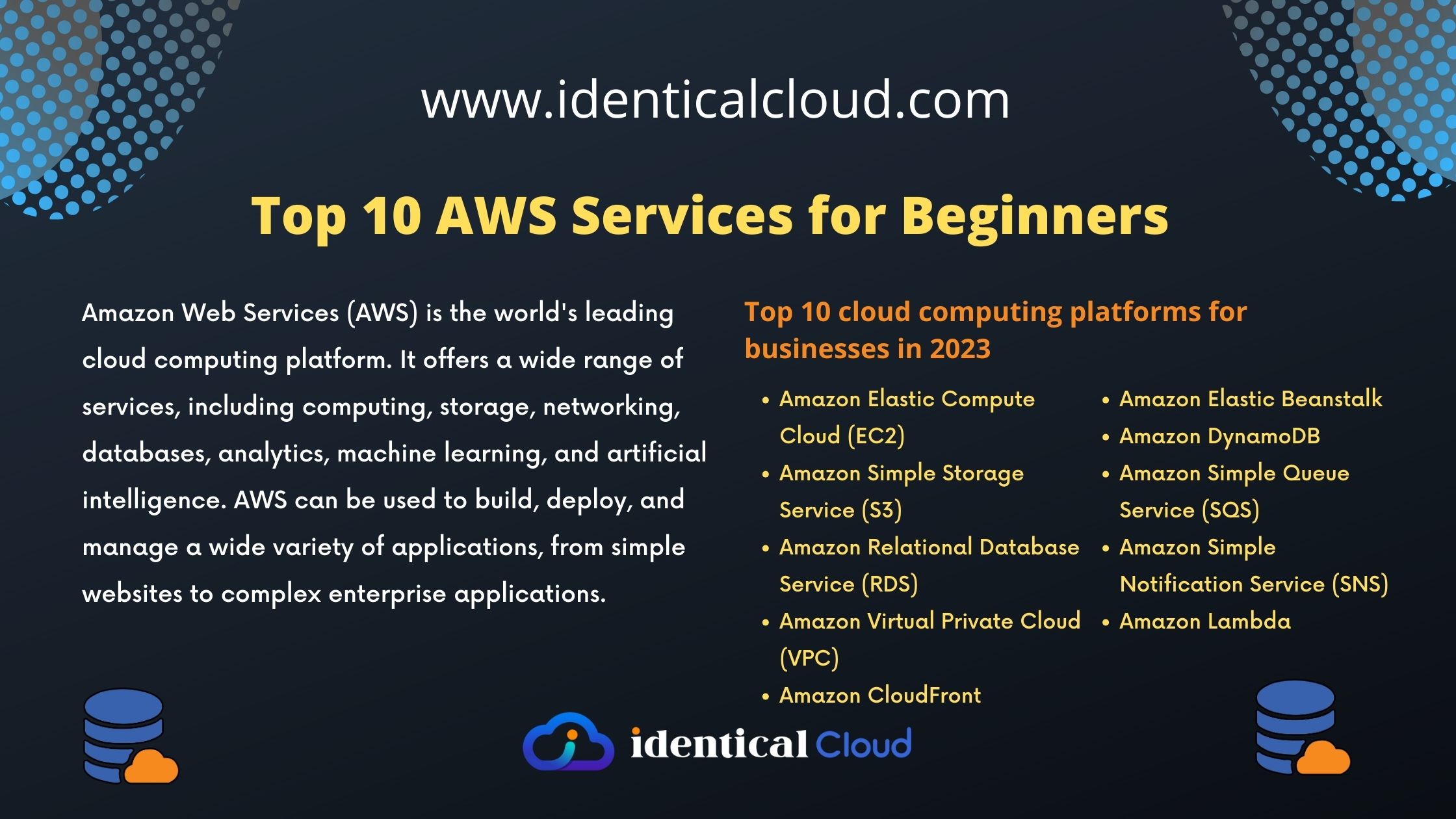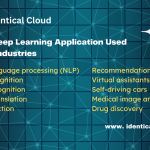
Top 10 Programming Languages to Land a Job in Big Tech Firms
Top 10 Programming Languages to Land a Job in Big Tech Firms
Big tech firms like Google, Facebook, Amazon, Apple, and Microsoft are always on the lookout for talented programmers and developers to drive their innovations. To secure a job at one of these tech giants, you need not only technical skills but also a deep understanding of the programming languages that are in high demand.
In this blog post, we’ll explore the top 10 programming languages that can help you land a job in big tech firms.
Python
Python is a high-level, interpreted programming language known for its simplicity and readability. Guido van Rossum created Python in the late 1980s, and it has since gained immense popularity in the world of software development. Python’s design philosophy emphasizes code readability, which makes it an excellent choice for both beginners and experienced developers.
Key features of Python:
- Readability: Python’s clean and easy-to-read syntax allows developers to express concepts in fewer lines of code than other programming languages. This readability enhances code maintainability and collaboration.
- Versatility: Python is a versatile language used in various domains, including web development, data analysis, scientific computing, artificial intelligence, automation, and more. Its extensive standard library and third-party packages contribute to its adaptability.
- Community and Ecosystem: Python has a vibrant and active community of developers, which means you can find ample resources, tutorials, and support online. The Python Package Index (PyPI) hosts a vast collection of open-source libraries and frameworks.
- Cross-Platform Compatibility: Python is cross-platform, meaning you can write code on one operating system and run it on others with minimal adjustments. This flexibility simplifies multi-platform development.
- Interpretation: Python is an interpreted language, which means that you don’t need to compile your code before running it. This makes development faster and more agile.
- Object-Oriented: Python supports both procedural and object-oriented programming paradigms, allowing developers to choose the approach that best suits their project.
- Large Standard Library: Python’s extensive standard library includes modules and packages for various tasks, reducing the need for reinventing the wheel and speeding up development.
Python’s popularity continues to grow, with a strong presence in the fields of data science and machine learning, thanks to libraries like NumPy, pandas, and TensorFlow. Its simplicity and readability also make it an excellent choice for educational purposes.
JavaScript
JavaScript is a versatile and essential programming language for web development, renowned for its ability to create dynamic, interactive, and responsive web applications. It plays a pivotal role in shaping the modern web, making websites more engaging and user-friendly.
Key Features and Characteristics:
- Client-Side Scripting: JavaScript is primarily a client-side scripting language, executed in the user’s web browser. This enables developers to enhance the user experience by adding interactivity without requiring constant server communication.
- Versatility: JavaScript is a versatile language that can be used for various purposes, including front-end web development, server-side scripting (Node.js), game development, and mobile app development (React Native).
- Libraries and Frameworks: A rich ecosystem of libraries and frameworks, such as React, Angular, and Vue.js, extends JavaScript’s capabilities, simplifying the development of complex web applications.
- Event-Driven: JavaScript follows an event-driven programming model, where actions (events) trigger specific functions (event handlers). This enables real-time responses to user interactions, such as clicks, scrolls, and form submissions.
- Asynchronous Programming: JavaScript excels at asynchronous programming, allowing developers to manage tasks like fetching data from servers or handling user input without blocking the application’s execution.
- Cross-Browser Compatibility: JavaScript is supported by all major web browsers, ensuring that your web applications work seamlessly across different platforms.
- Community and Resources: JavaScript has a vast and active developer community, resulting in an abundance of online resources, tutorials, and open-source projects. This makes it accessible for both beginners and experienced developers.
JavaScript’s role in web development continues to evolve, with advancements in browser capabilities and the introduction of new tools and frameworks. It remains a must-learn language for anyone interested in creating dynamic and interactive web experiences.
Java
Java is a robust, versatile, and platform-independent programming language that has played a significant role in the software development industry since its inception. Known for its portability, strong community support, and wide range of applications, Java has become a staple for developing everything from desktop applications to enterprise-level systems.
Key Features and Characteristics:
- Platform Independence: One of Java’s standout features is its “Write Once, Run Anywhere” capability. Java code can be compiled into an intermediate bytecode that runs on the Java Virtual Machine (JVM). This allows Java applications to be executed on various platforms without modification.
- Object-Oriented: Java follows an object-oriented programming (OOP) paradigm, emphasizing the use of objects, classes, and inheritance. This helps create modular and maintainable code.
- Robust and Secure: Java’s strong type system, exception handling, and memory management contribute to its robustness. Additionally, Java enforces security through features like sandboxing and access controls, making it suitable for building secure applications.
- Large Standard Library: Java includes an extensive standard library with classes and methods for common tasks, reducing the need to build everything from scratch and accelerating development.
- Multi-Threading: Java offers built-in support for multi-threading, making it suitable for developing concurrent and scalable applications. This is especially crucial for applications that need to handle multiple tasks simultaneously.
- Community and Ecosystem: Java boasts a vast and active developer community, which means abundant resources, libraries, frameworks, and tools are available for developers. The Java Community Process (JCP) oversees the evolution of the language and its associated technologies.
- Enterprise-Ready: Java is a preferred language for building enterprise-level applications, including large-scale web applications, e-commerce platforms, and backend systems. The Java EE (Enterprise Edition) platform provides the tools and APIs for such endeavors.
Java’s enduring popularity, backed by its solid foundation, ensures its continued relevance in a fast-evolving tech landscape. Whether you’re building enterprise-grade software or diving into mobile app development, Java’s versatility and extensive ecosystem make it a valuable language to master.
C++
C++ is a robust, general-purpose programming language that has had a profound impact on software development since its creation. It’s known for its combination of low-level memory control and high-level abstractions, making it suitable for a wide range of applications, including systems programming, game development, and complex software engineering.
Key Features and Characteristics:
- Efficiency: C++ is renowned for its efficiency, allowing developers to write code that can execute quickly and use system resources sparingly. This makes it a preferred choice for applications where performance is critical.
- Object-Oriented: C++ is an object-oriented language, emphasizing the use of classes and objects to structure code. Object-oriented programming (OOP) allows for modular and reusable code, making it easier to manage complex projects.
- Low-Level Control: C++ provides low-level memory control through features like pointers. This gives developers the ability to manipulate memory directly, which is crucial for systems programming and creating high-performance applications.
- Standard Template Library (STL): The STL is a powerful feature of C++ that offers a collection of reusable data structures and algorithms, simplifying common programming tasks and promoting code reuse.
- Platform-Independent: C++ code can be compiled to run on different platforms, providing a high degree of portability.
- Community and Ecosystem: C++ has a dedicated and active developer community that maintains libraries, frameworks, and tools. The C++ Standardization Committee oversees the language’s evolution and standardization.
- Versatility: C++ can be used for a wide variety of applications, including game development (using popular engines like Unreal Engine), systems programming, embedded systems, and scientific computing.
C++ offers a unique blend of performance, control, and high-level abstractions, making it a powerful tool for software developers. While it has a steeper learning curve compared to some other languages, mastering C++ can open doors to exciting and challenging opportunities in various domains of software development.
C#
C# (pronounced as “C sharp”) is a modern, object-oriented programming language developed by Microsoft. It is designed for building a wide range of applications, from Windows desktop applications to web and mobile applications. C# is known for its simplicity, safety, and versatility, making it a popular choice among developers for creating diverse software solutions.
Key Features and Characteristics:
- Elegant Syntax: C# boasts a clean and expressive syntax that emphasizes readability, reducing the potential for coding errors and making it easier for developers to write maintainable code.
- Object-Oriented: Like C++, C# is an object-oriented language that promotes code organization through classes and objects, facilitating modular and reusable code design.
- Type Safety: C# is a strongly typed language, which means that it enforces strict type checking at compile-time, reducing the likelihood of runtime errors and enhancing program reliability.
- Rich Standard Library: C# comes with a comprehensive standard library known as the .NET Framework (now .NET 5+). This library provides a wide range of pre-built classes and functions for tasks like data manipulation, network communication, and user interface development.
- Cross-Platform Development: With the introduction of .NET Core (now .NET 5+), C# has become cross-platform, allowing developers to create applications that run on Windows, Linux, and macOS.
- Garbage Collection: C# includes automatic memory management through garbage collection, relieving developers from the burden of manual memory management and reducing the risk of memory-related errors.
- Asynchronous Programming: C# offers built-in support for asynchronous programming, which is crucial for developing responsive and scalable applications.
- Unity Game Engine: C# is the primary programming language for the Unity game engine, making it a popular choice for game development.
C# offers an ideal balance between simplicity and power, making it an attractive choice for developers looking to build a wide range of applications, from user-friendly desktop software to highly scalable web and mobile solutions. Its strong integration with the Microsoft ecosystem and the open-source .NET Core framework have further extended its reach and utility in today’s software development landscape.
Ruby
Ruby is an elegant and dynamic programming language known for its simplicity, readability, and developer-friendly features. Created by Yukihiro Matsumoto (often referred to as Matz) in the mid-1990s, Ruby has gained a devoted following due to its focus on programmer happiness and productivity.
Key Features and Characteristics:
- Clean and Readable Syntax: Ruby’s syntax is designed to be human-readable and elegant, emphasizing simplicity and clarity. This makes it easy for developers to write and maintain code.
- Object-Oriented: Ruby is a pure object-oriented language, where everything is an object, even numbers and functions. This promotes a consistent and intuitive programming model.
- Dynamic Typing: Ruby employs dynamic typing, allowing variables to change their type during runtime. This flexibility simplifies development but requires careful testing to catch potential issues.
- Metaprogramming: Ruby’s powerful metaprogramming capabilities enable developers to write code that can modify and extend the language itself. This is particularly useful for creating domain-specific languages and frameworks.
- Gems and Libraries: Ruby has a vibrant ecosystem of gems (libraries) contributed by the community. These gems cover a wide range of functionalities, making it easy to add features to your Ruby projects.
- Rails Framework: Ruby on Rails (often referred to as Rails) is a popular web application framework built on Ruby. It follows the convention over configuration (CoC) and don’t repeat yourself (DRY) principles, which promote rapid development and maintainability.
- Community and Culture: The Ruby community is known for its friendliness and helpfulness. Rubyists often embrace the “Matz is nice and so we are nice” philosophy, creating a supportive and collaborative atmosphere.
While Ruby’s popularity may not match that of some other languages, it remains a valuable choice for developers who prioritize code readability, elegance, and productivity. Whether you’re building web applications, scripting, or diving into the world of metaprogramming, Ruby offers a delightful and expressive programming experience.
Swift
Swift is a modern, open-source programming language developed by Apple Inc. It was introduced in 2014 as a replacement for Objective-C and quickly gained prominence in the world of app development. Swift is known for its safety, speed, and developer-friendly features, making it a popular choice for iOS, macOS, watchOS, and tvOS app development.
Key Features and Characteristics:
- Safety First: Swift was designed with a strong focus on safety. It includes features like type inference, optionals, and automatic memory management to help developers write code that is less prone to runtime errors and crashes.
- Speed and Performance: Swift is known for its exceptional speed and performance, often outperforming Objective-C in benchmark tests. This makes it ideal for resource-intensive applications and games.
- Readability and Expressiveness: Swift boasts a clean and concise syntax that promotes code readability and maintainability. Its expressiveness allows developers to write more expressive and understandable code.
- Interoperability: Swift is designed to work seamlessly with Objective-C, enabling developers to use both languages within the same project. This makes it easy to transition from older codebases to Swift.
- Open Source: Swift is open-source, meaning that it is not limited to Apple’s ecosystem. It can be used on Linux, making it suitable for server-side development as well.
- Community and Evolution: Swift has a growing and active community that actively contributes to its development. The Swift Evolution process allows developers to propose and discuss new language features, ensuring that Swift continues to evolve and improve.
Swift’s combination of performance, safety, and readability has made it a preferred choice for iOS and macOS app development. Its continuous evolution, backed by Apple’s commitment and an active open-source community, ensures that it will remain a dominant force in the world of app development for years to come.
Go (Golang)
Go, commonly referred to as Golang, is a modern, open-source programming language created by Google engineers Robert Griesemer, Rob Pike, and Ken Thompson in 2007. Go was designed with a focus on simplicity, efficiency, and scalability, making it an excellent choice for developing software that demands high performance and ease of use.
Key Features and Characteristics:
- Efficiency: Go is renowned for its efficiency. Its compiled nature and statically typed system result in high-performance binaries that execute quickly, making it suitable for systems programming and microservices.
- Concurrency: Go was built with native support for concurrency using goroutines and channels. This makes it easy to write concurrent programs that can efficiently utilize multi-core processors without the complexities of traditional threading.
- Simplicity: Go emphasizes simplicity in its design, favoring readability and maintainability. Its minimalistic syntax reduces boilerplate code and promotes straightforward, idiomatic programming.
- Strong Typing: Go is a statically typed language, which means that variable types are defined at compile time. This provides safety and prevents type-related errors.
- Garbage Collection: Go includes automatic memory management with a garbage collector, relieving developers from manual memory management concerns.
- Standard Library: Go boasts a powerful and extensive standard library that covers a wide range of functionalities, including networking, file I/O, and web development. This standard library simplifies development tasks and encourages code reuse.
- Cross-Platform: Go is designed to be cross-platform and can compile and run on various operating systems, including Windows, macOS, and Linux.
- Open Source: Go is open-source and has a thriving community of developers who actively contribute to its growth and improvement.
Go’s combination of efficiency, simplicity, and built-in support for concurrency has made it a popular choice for modern software development. It excels in scenarios where performance and scalability are crucial, and its straightforward syntax makes it accessible to both new and experienced developers. As the demand for scalable and efficient software continues to grow, Go is likely to remain a prominent language in the programming landscape.
SQL
SQL, or Structured Query Language, is a powerful domain-specific language designed for managing and manipulating relational databases. It serves as a standard interface for interacting with databases, allowing users to store, retrieve, update, and delete data. SQL is essential for anyone involved in working with structured data, whether it’s a database administrator, data analyst, or software developer.
Key Features and Characteristics:
- Declarative Language: SQL is a declarative language, which means that users describe what they want to achieve, not how to do it. This makes SQL user-friendly and accessible, as users don’t need to worry about the underlying implementation details.
- Data Querying: SQL’s primary purpose is to query data from databases. It provides a set of commands like SELECT, WHERE, GROUP BY, and ORDER BY to filter, aggregate, and sort data based on specific criteria.
- Data Modification: SQL also allows users to modify data in databases using commands like INSERT, UPDATE, and DELETE. These commands are crucial for maintaining and updating data records.
- Data Definition: SQL includes data definition commands like CREATE, ALTER, and DROP for defining and modifying the structure of database objects such as tables, indexes, and views.
- Data Integrity: SQL supports the enforcement of data integrity constraints, ensuring that data remains accurate and consistent. This includes primary keys, foreign keys, unique constraints, and check constraints.
- Transaction Control: SQL provides transaction control commands like COMMIT and ROLLBACK to ensure the integrity and consistency of data when performing multiple database operations.
- Multiuser Environment: SQL is designed to handle concurrent access by multiple users. It includes mechanisms like locking to prevent data conflicts.
- Standardized Language: SQL is an ISO/IEC standard, which means that it has a consistent syntax and behavior across different database management systems (DBMS), although there may be some variations.
SQL is a fundamental tool for anyone working with structured data. Whether you’re managing data in a relational database or extracting insights from large datasets, SQL provides a versatile and powerful means to work with data efficiently and effectively. Its ubiquity and standardized syntax make it a must-know language for professionals in various fields.
Kotlin
Kotlin is a statically-typed, modern programming language developed by JetBrains, a renowned software development company. It was introduced in 2011 and has since gained significant popularity among developers due to its conciseness, safety features, and interoperability with Java. Kotlin is often considered a better alternative to Java, particularly for Android app development.
Key Features and Characteristics:
- Concise Syntax: Kotlin’s syntax is concise and expressive, reducing boilerplate code and making codebases cleaner and more readable compared to Java.
- Null Safety: Kotlin addresses the infamous NullPointerException (NPE) issue by introducing nullable and non-nullable types, making it impossible to call methods or access properties on null values without explicit checks.
- Extension Functions: Kotlin allows developers to add new functions to existing classes without modifying their source code. This is particularly useful for enhancing library classes.
- Type Inference: Kotlin’s type inference system automatically determines variable types, reducing the need for explicit type declarations, while still maintaining strong static typing.
- Interoperability: Kotlin is fully interoperable with Java, allowing developers to use existing Java libraries and frameworks seamlessly. It’s often used alongside Java in mixed-language projects.
- Functional Programming: Kotlin supports functional programming constructs, such as lambdas, higher-order functions, and immutability. This makes it suitable for functional programming paradigms.
- Smart Casts: Kotlin introduces smart casts, which automatically cast variables after type checks, reducing the need for explicit casting.
- Coroutines: Kotlin provides built-in support for coroutines, making asynchronous programming more straightforward and less error-prone.
- Data Classes: Kotlin simplifies the creation of classes that are primarily used for storing data by introducing data classes, which automatically generate useful methods like ‘
equals‘, ‘hashCode‘, and ‘toString‘.
Kotlin’s rise in popularity can be attributed to its modern features, excellent tooling support, and its ability to address common pain points in other programming languages like Java. Whether you’re building Android apps, server-side applications, or exploring functional programming, Kotlin provides a versatile and robust option for a wide range of development needs.
Securing a job at a big tech firm requires a combination of technical expertise, problem-solving skills, and a deep understanding of the programming languages that are in demand. While these top 10 programming languages are highly sought after, it’s important to keep in mind that each tech company may have specific language preferences based on their projects and technologies. To increase your chances of landing a job in big tech, consider mastering one or more of these languages, staying up-to-date with industry trends, and showcasing your skills through personal projects and contributions to open-source communities.








